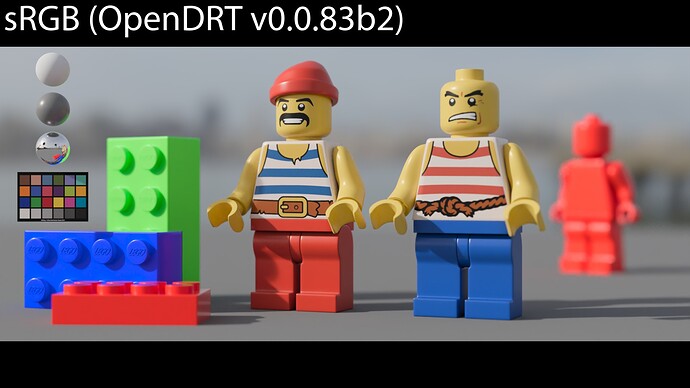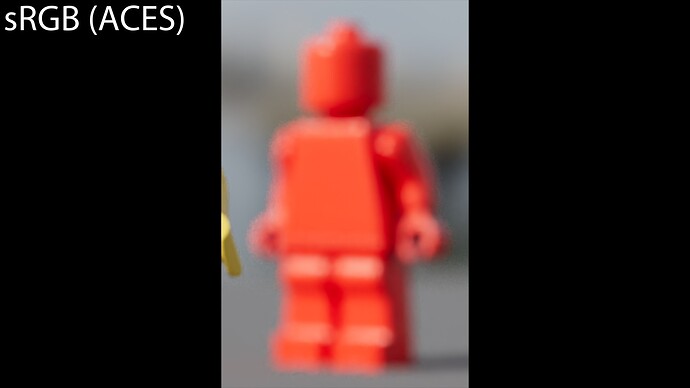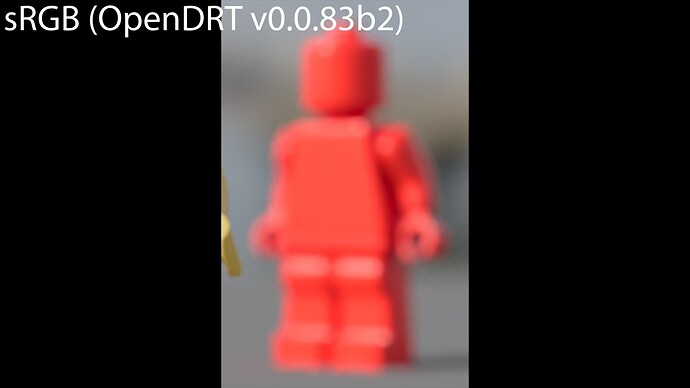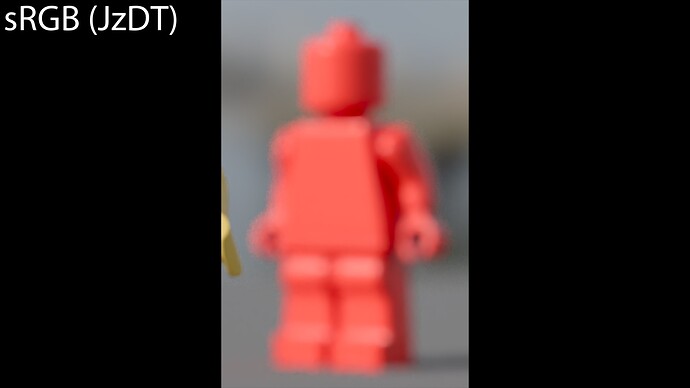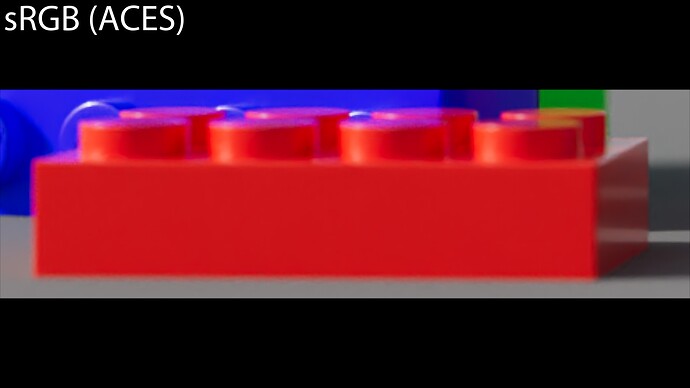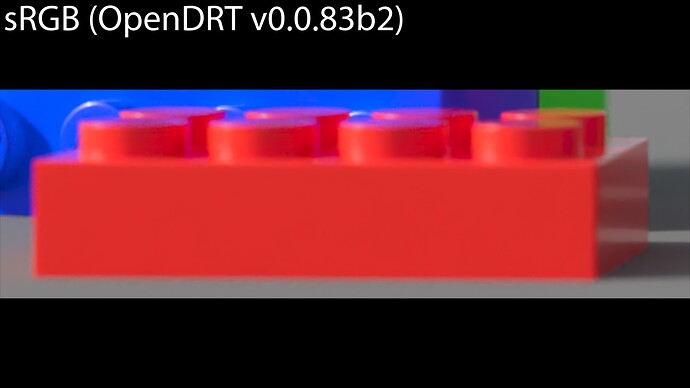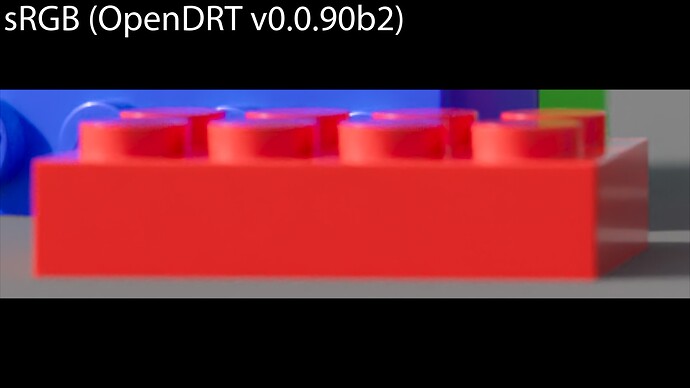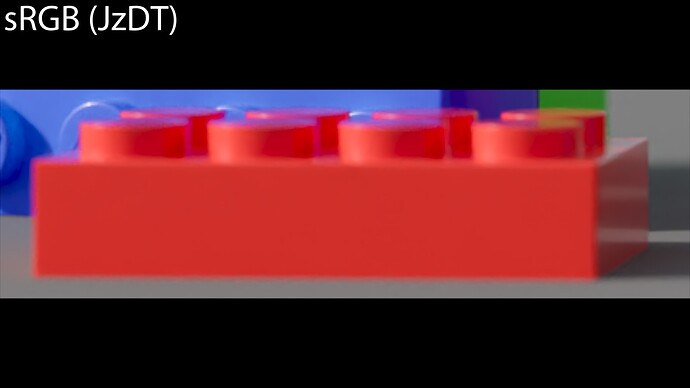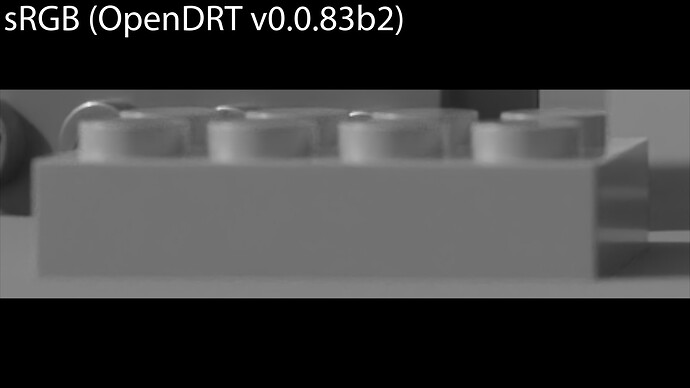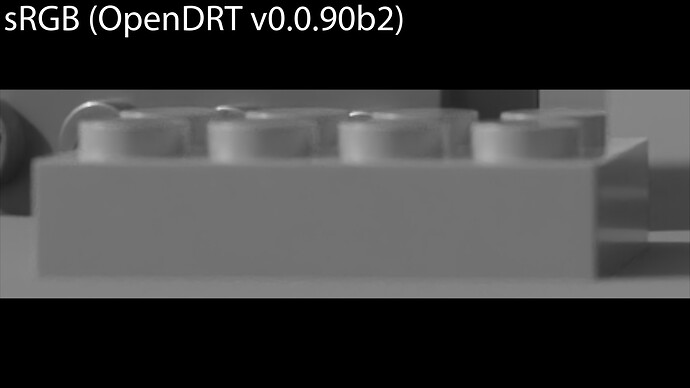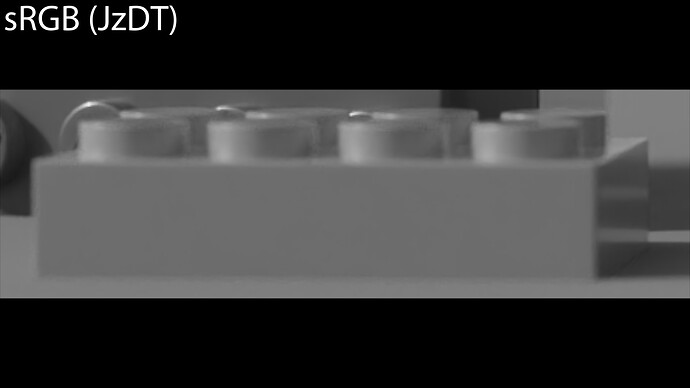Hi everyone,
I have been testing several of my CG frames through the different prototypes and I would like to share some of the results. I think the JzAzBz LMS prototype is worth a shot for some reasons I would like to detail below. I would like to mention that I am using all these Display Transform (ACES, OpenDRT and zDT) with default values.
This is an ACEScg render, displayed in sRGB (ACES) :
Same ACEScg render, displayed in sRGB (OpenDRT v0.0.83b2) :
Same ACEScg render, displayed in sRGB (OpenDRT v0.0.90b2) :
Same ACEScg render, displayed in sRGB (JzDT) :
There are two things that caught my eye. First is the red lego in the back.
With ACES, it is kinda orange.
This is the result with OpenDRT v0.0.83b2.
This is the result with OpenDRT v0.0.90b2. You can see an outline on the left screen side of the lego.
JzDT has a similar rendering but the outline (fringing ?) is gone.
The second thing I noticed is about the lego brick in the low left corner.
Close-up of the ACEScg render, displayed in sRGB (ACES) :
Same close-up of the ACEScg render, displayed in sRGB (OpenDRT v0.0.83b2) :
Same close-up of the ACEScg render, displayed in sRGB (OpenDRT v0.0.90b2) :
Same close-up of the ACEScg render, displayed in sRGB (JzDT) :
If you look only at the red brick, you can see that the specular and diffuse response are completely different between the several display transforms. This has been explained several by Thomas in the past.
But what I found interesting (I have seen it on several other renders of mine, not only this Lego one) is that OpenDRT v0.0.90b2 and JzDT are converging to a similar rendering. Is this coincidential ?
Secondly, after comparing the different renders of the red brick, I asked myself if there was some kind of “ground truth” somewhere. Because I don’t want to rely on my eyes, especially on full CG render. So I did my little test to desaturate completely the renders to check out luminance.
Close-up of the ACEScg render, displayed in sRGB (ACES) :
Same close-up of the ACEScg render, displayed in sRGB (OpenDRT v0.0.83b2) :
Same close-up of the ACEScg render, displayed in sRGB (OpenDRT v0.0.90b2) :
Same close-up of the ACEScg render, displayed in sRGB (JzDT) :
What really got me interested is that by desaturating completely the renders, first of all, they all look quite similar, especially the sun impact on the red brick. And by comparing closely, I thought if we only focus on the red brick and the sun impact, that the JzDT was the closest one to the luminance test.
I’ll do more tests in the coming days. I have several things to point out that I would like to share.
Chris

